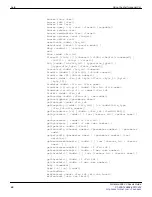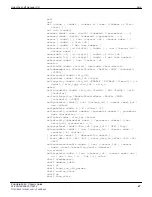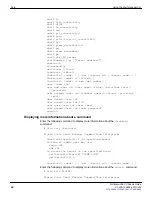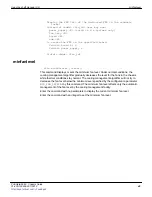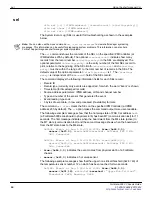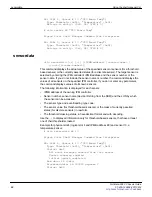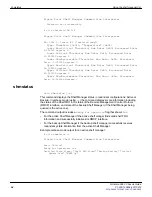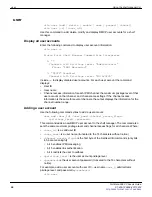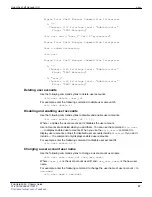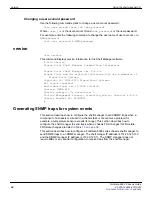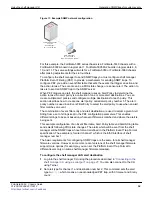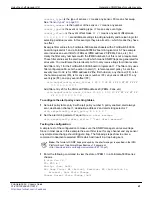
Generating SNMP traps for system events
Using the shelf manager CLI
FortiGate-5060 Chassis Guide
60
01-400-129494-20110912
# clia setlanconfig 1 destination_type 2 0 0 0
3
Set the destination IP and MAC address, which is the IP and MAC address of the
SNMP server. The SNMP server can be on a different subnet.
# clia setlanconfig 1 destination_address 172.20.120.11
00:1A:A0:2F:BC:C6
4
Set the community name used in PET traps. This can be any community name, the
default is
public
.
# clia setlanconfig 1 community “<community_name>”
To configure the PEF event filter table
1
Enable PEF and enter a PEF control flag:
# clia setpefconfig control f
This command sets an 8-bit value, entered in hexadecimal and treated as a bit mask,
that represents control flags for PEF. The control value
f
enables PEF, enable the
generation of event messages for PEF actions, enables startup delays and enables
alert startup delays.
2
Enable alert actions:
# clia setpefconfig action_control 1
An 8-bit value entered in hexadecimal and treated as a bit mask. Setting
action_control
to
1
enables alert actions.
3
Delay PEF and delay alerts for 60 seconds after the system powers up:
# clia setpefconfig startup_delay 60
# clia setpefconfig alert_startup_delay 60
4
Add event filter entries. The syntax of the command is:
# clia setpefconfig event_filter <entry_number>
<flter_configuration> <filter_action> <alert_policy_number>
<severity> <IPMB_address> <channel> <sensor_type>
<sensor_number> <event_type> <event_offset> 0 0 0 0 0 0 0 0 0
Each even filter command adds or edits and event filter table entry. Each entry consists
of a
<entry_number>
and a
<filter_action>
followed by 19 numeric values, in
hexadecimal, encoded according to the definition in table 15-2 of the IPMI specification
version 1.5 (
http://download.intel.com/design/servers/ipmi/IPMIv1_5rev1_1.pdf
<entry_number>
is the filter entry number. Each entry must have a different number.
Adding a second entry with the same number overwrites the first entry with that
number.
<filter_configuration>
. In this example the filter configuration is ways set to
80
to enable the filter.
<filter_action>
. In this example the filter action is ways set to
1
to set the action
to alert.
<alert_policy_number>
. In this example the alert policy number is
5
.
<severity>
. In this example the severity is 0
2
which means information level
messages and higher can trigger traps. Normally you would set severity to 08 for non-
critical conditions, 10 for critical conditions, or 20 for non-recoverable conditions to limit
the number of traps sent.
<IPMB_address>
is the IPMB address of the FRU for which the alert is generated.
See
“IPMB addresses, logical and physical slot numbers, and FRU ids” on page 30
<channel> is the channel to match. FF
means any channel.

